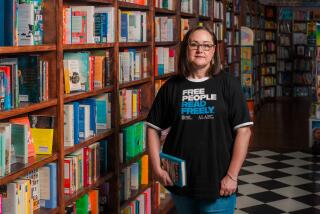Recovery From Shootings Starts With Stopping Bullies
I was prepared for a barrage of angry responses to my column suggesting that the intolerance encountered by young Andy Williams in the town of Santee might help explain his murderous rampage last week.
But, of the more than 130 e-mails I received, only a handful took exception. Instead, most said it reflected their own painful pasts and illustrated the perils their children face.
“As a former outcast of my local high school, I feel a weird and special connection with Andy Williams,” e-mailed one 17-year-old, who dropped out of school and enrolled in home study to avoid the taunts of his peers. “I know what it’s like to be dehumanized day after day, with nowhere to turn to for help.
“Many teachers and school faculty turned their backs when kids threw rocks, took off their shoes and threw them at me, refused to give me a towel in the showers [after PE] so they could point and laugh at the ugly fat kid. . . . Bullying is a stupid word for what goes on in today’s high schools. It is torture, and I have the scars to prove it.”
And those scars can take years to fade.
“I was one of those kids bullied in school,” writes a 42-year-old woman, who can still taste the tears she cried every day, “from kindergarten until graduation from high school. I was beat up on on the playground at recess and beat up walking home from school. I was laughed at, and groups of people would get up from the lunch table when I sat down . . . all because I was shy.”
Dozens of readers, a generation or more removed from school, recounted being taunted for being too fat, too quiet, too tall. Dozens more wrote to share their pain over the bullying their children are now going through.
Experts say bullying seems to be on the increase and growing more vicious, though the dimensions of the problem are hard to quantify. The subject was not studied much in this country until a few years ago.
But the National Assn. of School Psychologists now estimates that 160,000 kids skip school on any given day because they are bullied, and studies show that 10% of eighth-graders say they stay home at least once a month because they are afraid of being bullied.
And, the study found, more than half of all teens who are not bullied believe that victims “bring it on themselves.” Only four in 10 say they would step up to help someone who is being bullied.
It seems clear that there is less social pressure on kids to conform to traditional standards of courtesy and civility and that anyone can become a victim these days.
“You don’t have to be small, slight, a racial minority to be the recipient of intolerance and hatred,” wrote the father of a boy who is “tall, broad and Irish” but was picked on when his family moved to San Clemente because he was the new kid in class.
Readers made clear--and I had hoped my column Sunday did as well--that whatever anger Andy felt was no excuse for his shooting rampage.
“How can you blame a whole community for the decision of one boy?” asked one reader. “Over the years, boys have been ‘picked on’ and they coped. They did not shoot anyone in the schoolyard.” She took me to task for picking on Santee, “a town trying to recover from a horrible tragedy.”
*
I hope Santee can recover. I hope we all do. I hope we are not like the patient diagnosed with lung cancer who takes the prescribed chemotherapy, then goes back to a pack a day.
The signs do not look good. Santana High officials announced last week they plan to transfer Andy’s friends--those kids who heard his threats but never told authorities--for their own safety. It they do this, they cede authority to the bullies who already seem to run the place.
What happened to the culture of disapproval that used to ostracize the bullies, not just the bullied? There is clearly something changing--on our campuses, in our culture, among our families, as this suburban high school teacher can attest:
“I have been a teacher for a quarter of a century,” he writes. “The increase in homophobic, racial and gender slurs on my campus has been astounding. Fifteen years ago, if a student swore in front of a teacher, the teacher would stop it immediately. Most kids were embarrassed that they’d been heard. Now . . . kids are insulted that a staff member intervened in their conversation.”
He works at a good school, in a middle-class community, one with high test scores, state-of-the-art technology. “But if you look deeper, there are serious problems,” he says. “So much time is spent doing the right things to look good on paper, when, in reality, schools have become a brutal place.
“Zero tolerance is just a catch phrase; kids are bullied because they don’t fit the perfect mold and that is the reality so many of our kids face. . . . The bottom line is our kids are learning that bullying is OK because nothing is done to prevent it.”
Maybe this is time for Santana High to lead us in our first steps toward recovery. Let Andy’s friends return to school. Punish them for their mistake, for the silence and cowardice they displayed. But don’t let them suffer at the hands of other students.
Protect them; don’t make them run. Starting now, make true on your promise to make your school a safe place again.
*
Sandy Banks’ column runs on Sundays and Tuesdays. Her e-mail address is sandy.banks@latimes.com.
More to Read
Sign up for Essential California
The most important California stories and recommendations in your inbox every morning.
You may occasionally receive promotional content from the Los Angeles Times.










